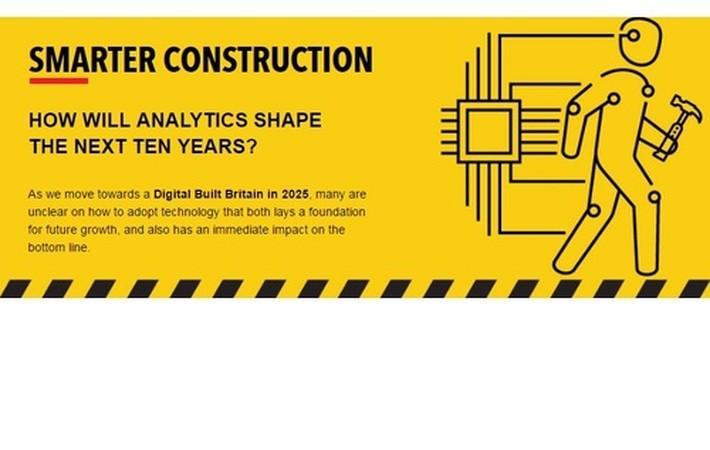
Published on 12/12/2016 | Strategy
Tomorrow’s technology in today’s construction sector
The Internet of Things (IoT) has started to make a quantifiable, real-world difference to sectors as diverse as retail and healthcare, but to date hasn’t had a genuine impact on construction. However, there are very good reasons why this is about to change and the “Industrial Internet” is being seen as a multi-billion-pound market opportunity. Manufacturers around the world are looking at ways to bring digital transformation and automation to their plants to make them more efficient and therefore more profitable.
The IoT is all about the integration of complex physical machinery with networked sensors, Near Field Communication (NFC) devices, wireless technology and software. It connects them all up “intelligently” to take data from various devices in real-time, analyse it, use it to monitor the productivity and reliability of both staff and assets, and ultimately use this insight to adjust operations. In construction it can enable machinery and materials to “talk” to a central data platform to capture critical performance insight.
We’ve identified three areas in which these technologies, perhaps in conjunction with “machine learning” and other related innovations, are already proving their worth.
The IoT can help increase efficiencies and reduce wastage which has a direct, visible impact on the bottom line. In 2015 McKinsey estimated that IoT could help construction sites save up to an estimated $930bn annually.
One aspect of this is in preventative maintenance – self-detecting sensors in larger tools such as drills can relay alerts when a tool is in need of maintenance or repairs, hopefully heading off the costs associated with failure and breakdown.
Atlas Copco has developed RigScan, a service program for its customers through which technicians perform comprehensive diagnostic audits using mobile devices, thermal imaging cameras and embedded sensors to perform a ‘health check’ for machines. This produces a report detailing the services needed to keep parts running within factory specifications.
“Back in the day, if a machine wasn’t working right, you opened it up, looked at it, listened to it. Now you just plug this thing into the machine, run diagnostics, and say, ‘ok, it’s that’.”
- Mike Brezonick, Diesel Progress
A smarter approach to data collection can be used to ensure greater safety for workers. Construction sites are starting to see smart clothing with electronic sensors and wearable devices allowing workers to transmit data and images and access important information “hands-free”. This smart clothing may include the additional benefits of automatic time-logging to ensure efficiency and provide health monitoring. Laing O’Rourke recently used IoT technologies to design a “smart hardhat” that monitors worker temperature and heart-rate to notify users when they have been in the sun for too long.
Another area where the IoT is impacting on worker safety is in remote operation capabilities meaning workers no longer need to physically be at the helm of large pieces of potentially hazardous machinery.
With regard to the safety of drivers and vehicles on the open road (and in the delivery/supply chain), IoT devices can monitor things such as a driver’s braking habits or how frequently they drift out of lane. (This can also give a fleet manager insight into how driver behaviour affects fuel efficiency.)
Construction companies are beginning to see the value of the IoT for tracking inventory and assets. For its operations in India, JCB have connected over 10,000 construction machines including backhoe loaders, compact wheel loaders and excavators. This has enabled JCB to remotely monitor the real-time health and performance of assets in the field. The predictive capability helps ensure operational availability of assets to maximise value from them, and a geo-fencing feature prevents misuse and theft. (In addition, it allows asset owners to enforce contract compliance!)
For the construction sector generally, connecting parts with the rest of the service management process allow companies to have “one single view”, keeping all of their important information in one place rather than across spreadsheets, to manage inventory. Users can keep detailed records of all inventory to easily build a budget and manage annual spend on equipment. Organisations can share information between the field and back office by tracking locations and owners to each inventory item.
I’m very interested to hear more examples of how construction companies are using the IoT to impact on safety, profitability and inventory management. Do share your stories below…
Also if you'd also like to know more about how data and analytics are shaping the wider construction industry, then you may want to download our Smart Construction report. You can get it here.
This article was originally posted on LinkedIn.
